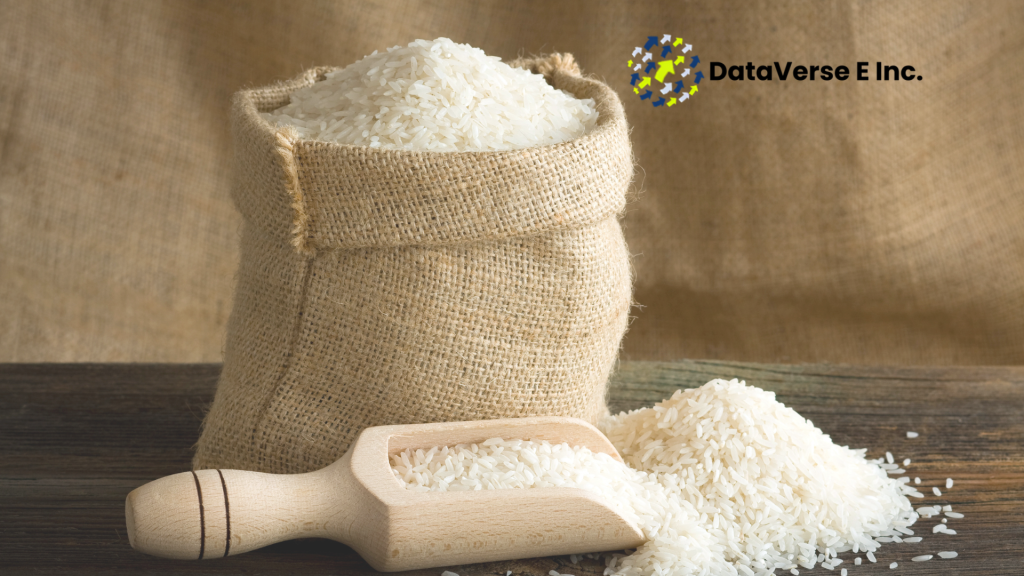Introduction to the Textile Export Landscape
The global textile export industry is a vital component of international trade, generating substantial revenue and employment across various regions.
As of 2024, textile exports account for a significant share of many countries’ economies, with the sector evolving rapidly in response to changing consumer preferences, sustainability demands, and technological advancements.
The importance of textiles goes beyond simple garment manufacturing; it includes a vast array of products such as technical textiles, home furnishings, and apparel, thereby creating a dynamic environment for exporters.
Major players in textile exports include countries such as China, India, Bangladesh, and Vietnam.
These nations have established themselves as leaders in the industry, largely due to their ability to provide affordable labor and scale production efficiently.
China’s dominance in textile exports remains unchallenged, though other countries are gradually increasing their market share through competitive pricing and improving quality standards.
Bangladesh, for example, has seen substantial growth in its apparel sector, while India is capitalizing on its traditional textile heritage coupled with modern manufacturing techniques to enhance its export capabilities.
The landscape of textile exports is also influenced by key markets, including the European Union, the United States, and emerging economies in Asia and Africa.
These regions not only consume a significant portion of global textile output but also drive trends in sustainability and innovation.
An increasing consumer awareness regarding ethical sourcing and environmental impact is prompting suppliers and exporters to adapt their practices accordingly.
This shift has created opportunities for countries that emphasize sustainable production methods, allowing them to compete more effectively in the global textile market.
Recent years have witnessed fundamental shifts in the industry, including the rise of digital technologies that streamline the supply chain and improve the efficiency of textile exports.
E-commerce has opened new avenues for smaller players to engage directly with consumers while also fostering a decentralized model of production.
This transformation lays the groundwork for examining future trends and scenarios that may shape the textile export landscape moving forward.
The Rise of Sustainable Fashion
In recent years, sustainability has emerged as a pivotal theme within the textile industry, influencing various aspects of production and consumption.
As consumers become increasingly aware of the environmental impact of their choices, demand for eco-friendly textiles has surged.
This trend reflects a broader shift toward ethical consumerism, where individuals seek products that align with their values.
Consequently, brands are responding by prioritizing sustainable materials and practices in their offerings, thereby reshaping their textile exports.
Leading fashion brands are making significant commitments to sustainability by adopting innovative practices that minimize their environmental footprints.
Many are opting for organic fibers, recycled materials, and low-impact dyeing processes, which mitigate the adverse effects traditionally associated with textile manufacturing.
Additionally, brands are embracing circular economy principles, designing garments for longevity and recyclability.
This transformation is not merely a response to consumer preferences; it is increasingly becoming a regulatory imperative as countries implement stringent policies to reduce waste and emissions in the textile sector.
The regulatory landscape is evolving alongside consumer expectations, with governments around the world recognizing the need for sustainable practices in textile exports.
Legislation aimed at promoting transparency in supply chains and reducing harmful environmental impacts is becoming more prevalent.
As a result, brands that proactively adopt sustainable practices are likely to gain a competitive advantage in the global market.
They not only meet consumer demand but also anticipate regulatory changes, positioning themselves as leaders in a rapidly shifting landscape.
Overall, the rise of sustainable fashion signifies a transformative movement within the textile industry.
It is reshaping production methodologies, influencing consumer purchasing decisions, and guiding the future of textile exports.
As sustainability continues to drive innovation, the implications for brands and their export strategies will be profound, marking a new era in textile exports that aligns with global environmental goals.
Technological Innovations in Textile Production
The textile industry is experiencing a revolution driven by technological innovations, which are reshaping the production process and enhancing overall efficiency.
Automation has become a predominant focus, enabling manufacturers to streamline operations and reduce labor costs.
Advanced machinery and robotics facilitate precise cutting, sewing, and finishing processes, leading to higher production rates and consistent quality.
This shift not only increases output but also positions textile exports to meet rising global demand effectively.
Moreover, digital printing technology has emerged as a game changer in textile production.
Traditional printing methods are gradually being replaced by digital solutions that offer faster turnaround times, lower waste, and the ability to produce complex designs on a range of fabrics.
Digital printing allows manufacturers to experiment with bold patterns and colors without incurring significant costs associated with set-up and production.
Consequently, this innovation enhances the appeal of textile exports, providing versatility and customization that are crucial in today’s market.
Another area of focus is the development of smart textiles. These materials integrate advanced technology, such as sensors and conductive threads, which can respond to environmental changes.
Smart textiles have vast applications, from fashion to medical uses, and their increasing popularity signifies a new frontier in the textile industry.
As manufacturers incorporate these high-tech fabrics into their product lines, they are likely to enhance their export capabilities by offering unique products that attract global buyers.
In summary, the integration of automation, digital printing, and smart textiles into textile production is leading to increased efficiency, improved quality, and innovative offerings.
These technological advancements are imperative for manufacturers to stay competitive and enhance their textile exports in an ever-evolving market.
Changing Consumer Preferences and Their Impact on Exports
In recent years, consumer preferences have undergone significant transformations, greatly influencing textile exports around the world.
Modern consumers are increasingly leaning towards personalized products, which has led manufacturers and exporters to adapt their offerings.
This desire for individuality often manifests in customized designs, colors, and sizes, prompting brands to invest more in innovation and flexibility in their production processes.
Consequently, businesses are now shifting their strategies to meet these demands, optimizing their supply chains to provide unique, tailor-made solutions for customers.

Furthermore, there is a notable trend towards transparency in sourcing.
Today’s consumers are far more conscious of the origin of the products they purchase, including the raw materials and manufacturing processes involved.
This has resulted in a growing demand for ethically sourced textiles and a push for brands to disclose their supply chain practices.
Exporters are responding accordingly by enhancing traceability mechanisms and promoting their sustainability initiatives.
This newfound emphasis on responsible sourcing is becoming a crucial differentiator in the competitive landscape of textile exports, as it aligns with the values of ethically-minded consumers.
Another salient trend reshaping consumer behavior is the preference for functional and durable clothing.
With increasing awareness regarding environmental impact and sustainability, consumers are seeking garments that not only serve a purpose but are also designed to last.
This shift towards practicality influences what types of textiles are in demand, leading to increased exports of high-quality, versatile fabrics.
Brands are recognizing that durability does not compromise style but rather enhances it, prompting them to invest in materials that are both functional and aesthetically appealing.
Overall, these changing consumer preferences are shaping the future of textile exports, encouraging the industry to innovate and adapt to meet diverse market demands.
Global Trade Agreements and Tariffs in 2024
The landscape of global textile exports is significantly influenced by trade agreements and tariffs, shaping the dynamics of international commerce in 2024.
As countries continue to navigate the complexities of global trade, recent and forthcoming agreements are poised to redefine supply chains and alter competitiveness within the textile industry.
The importance of these policies cannot be overstated, as they play a critical role in the movement of goods across borders, affecting everything from pricing to availability.
In 2024, many nations are expected to finalize or enter new trade agreements aimed at reducing tariffs on textile exports.
For instance, regional alliances such as the Comprehensive and Progressive Agreement for Trans-Pacific Partnership (CPTPP) will enhance cooperation among member countries, leading to potentially lower tariffs and reduced trade barriers.
Such developments encourage exporters to explore new markets, enhancing their reach and profitability. These agreements can also lead to improved standards and practices across the industry, benefiting both producers and consumers with higher quality products.
Conversely, the imposition of tariffs by some countries can create hurdles for textile exports, leading to increased costs for manufacturers and potentially inflating prices for consumers.
In 2024, ongoing trade tensions may prompt countries to engage in protectionist policies, further complicating the export landscape.
Exporters must remain vigilant, adapting their strategies to mitigate the impact of these tariffs and capitalize on opportunities presented by trade policies.
Ultimately, understanding the implications of global trade agreements and tariffs is essential for stakeholders in the textile export market.
As these policies evolve, they will continue to shape the future of the industry, influencing supply chains, competitiveness, and the overall direction of textile exports in the years to come.
Regional Trends: Key Export Markets in 2024
As the global economy continues to evolve, the textile industry is witnessing significant changes in export dynamics.
In 2024, several regions are emerging as key players in textile exports, driven by unique characteristics and consumer demands.
Among them, Asia stands out, primarily led by countries such as China, India, and Bangladesh.
These nations not only have established manufacturing capabilities but also benefit from a robust supply chain and competitive pricing.
The demand for sustainable textiles has fostered innovation, with an increasing number of manufacturers adopting eco-friendly production practices to cater to environmentally conscious consumers.
In Europe, textile exports are seeing a resurgence, particularly in countries like Germany, Italy, and Portugal. The European market is characterized by a preference for high-quality, fashion-forward products.
This trend has encouraged exporters to focus on craftsmanship and sustainability, aligning with the growing consumer ethos of supporting ethical production.
European exporters also face the challenge of stringent regulations aimed at environmental protection, necessitating compliance with numerous safety and quality standards.
Nevertheless, the prospects for growth remain strong due to a rising demand for luxury textiles in both local and international markets.
North America features prominently within the textile export landscape, with the United States and Mexico leading the way.
The U.S. textile market is increasingly influenced by domestic manufacturing initiatives and the shift toward localized production.
This not only reduces carbon footprints but also caters to a growing consumer preference for locally sourced goods.
Moreover, Mexican textile exporters are leveraging favorable trade agreements, which bolster their market penetration in the United States and beyond.
The adaptability of these markets to consumer shifts underscores their importance in the textile export arena.
In conclusion, the regional trends in textile exports for 2024 highlight the evolving nature of global trade.
Each key market presents unique opportunities and challenges, emphasizing the need for adaptability among exporters striving to succeed in this competitive landscape.
The Role of Digital Marketing and E-Commerce
The textile export industry is undergoing a significant transformation driven by advancements in digital marketing and e-commerce.
As global consumers increasingly shift to online shopping, textile exporters are adapting their strategies to leverage these changes effectively.
The integration of digital marketing techniques allows brands to reach wider audiences and create a more personalized shopping experience for potential customers.
By employing targeted advertisements and social media campaigns, textile companies can enhance their visibility and brand recognition within the competitive landscape.
E-commerce platforms have emerged as essential tools for textile exports, enabling brands to sell directly to consumers without the need for intermediaries.
This direct-to-consumer model not only reduces costs but also allows for better control over branding and customer relations.
With the rise of online marketplaces, coupled with a robust digital presence, textile exporters can tap into new markets that may have previously been inaccessible through traditional export methods.
These online avenues offer opportunities for smaller manufacturers to compete with large brands, democratizing the export landscape.
Moreover, the role of data analytics in digital marketing cannot be overstated.
By utilizing data-driven insights, textile exporters can understand consumer behavior, track trends, and refine their marketing strategies accordingly.
This strategic approach informs product development and inventory management, ensuring that exporters are aligned with market demands.
In addition, influencer marketing and engaging content play crucial roles in attracting and retaining customers, making it imperative for textile companies to adopt innovative digital campaigns to stay relevant.
The impact of digital marketing and e-commerce on textile exports is profound, presenting endless possibilities for growth and adaptation.
As we look forward to 2024, the successful integration of these tools will undoubtedly shape the future of the industry, fostering greater customer engagement and ultimately driving higher export revenues.
The Importance of Ethical Labor Practices
The textile industry, a significant player in global trade, is undergoing a transformation driven by an increasing awareness of ethical labor practices.
Over recent years, consumers have become more conscious of the social implications tied to their purchases.
This heightened awareness has thrust corporate responsibility into the spotlight, influencing decision-making processes and affecting textile exports profoundly.
Businesses are now recognizing that neglecting labor rights can lead to severe reputational damage and a decline in sales, aligning their practices with consumer values.
Activism plays a pivotal role in this shift, as various organizations and advocates tirelessly campaign for fair labor standards within the textile sector.
These groups bring attention to issues surrounding workers’ rights, fair wages, and safe working conditions.
Social media platforms have empowered consumers to voice their concerns, pressuring companies to ensure that their supply chains adhere to ethical labor standards. As a result, brands that prioritize ethical practices not only safeguard their image but also create loyal customer bases that value transparency and integrity in their purchasing decisions.
Incorporating ethical labor practices into the production process presents numerous benefits beyond compliance with consumer expectations.
It fosters positive relationships with workers, enhances productivity, and improves overall quality in textile exports.
Companies that invest in their workforce often see a reduction in turnover rates, leading to a more skilled and satisfied labor force.
Furthermore, brands that adopt sustainable practices and emphasize ethical labor promises can tap into emerging markets where consumers actively seek out responsibly produced goods, thus maintaining competitiveness in a rapidly evolving industry.
The emphasis on ethical labor practices is shaping the future of textile exports. As consumers continue to prioritize sustainability and social responsibility, businesses must adapt to these trends to thrive in the global marketplace.
Future Outlook: Predictions for 2024 and Beyond
The textile export industry is entering a transformative phase as we approach 2024 and beyond. Various trends identified in earlier sections suggest a dynamic market landscape characterized by both challenges and opportunities.
One significant prediction is the continued growth of sustainable textile exports. As global awareness surrounding environmental issues increases, consumers are increasingly opting for sustainable products.
Textile manufacturers that prioritize eco-friendly practices are likely to experience higher demand, consequently reshaping global supply chains.
Moreover, advancements in technology are expected to play a pivotal role in the evolution of textile exports.
Innovations such as automation, artificial intelligence, and digital textile printing will likely enhance production efficiency, reduce waste, and lower costs.
As companies adopt these technologies, we may see a shift in the manufacturing paradigm where small-scale producers gain access to global markets via e-commerce platforms, allowing for greater diversity in textile offerings.
However, the textile export sector may also face significant challenges, particularly in terms of regulatory compliance and competition from emerging markets.
Countries with lower labour costs and fewer regulations could threaten established exporting countries.
To sustain competitive advantages, textile exporters will need to innovate continuously while adapting to changing regulations and consumer preferences.
Additionally, geopolitical factors may influence trade agreements and tariffs that affect textile exports.
As nations navigate the complexities of international trade, businesses must remain vigilant and flexible to mitigate risks associated with fluctuations in policies.
In summary, the future of textile exports in 2024 and beyond appears promising, albeit complex.
By embracing sustainability, leveraging technology, and navigating potential challenges, industry stakeholders can position themselves effectively within an evolving global textile market.






1 Comment
[…] is a great time to start a textile export business because government programs predict a 3.3% growth in trade for 2025, and international markets are […]